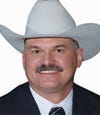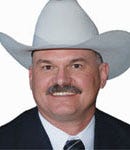Let’s revisit implant use as we roll into calving season, so producers can give it some thought prior to spring turnout.
January 2, 2020

First, the disclaimer: The information offered here should not be construed as endorsing any particular product.
Recent reports indicate that approximately 70% of calves are marketed to feedyards and stocker operations without being implanted. I have discussed this before, but I’m surprised how few cow-calf producers take advantage of this proven, safe production tool.
Let’s revisit implant use as we roll into calving season, so producers can give it some thought prior to spring turnout.
Myth No. 1. I will get a premium for my calves if they have not been implanted.
This belief simply isn’t true. For several years, Superior Livestock data have shown there is no significant difference in the price of calves that received an implant versus calves that did not. Further, in all my years of working with feedyards, I’ve never heard of a purchase order placed that specifically stated that a higher price should be paid for nonimplanted calves.
Myth No. 2. Calves will perform better in the feedlot if they don’t receive an implant beforehand.
This myth is the basis for Myth No. 1. In the 1990s, there was a study that supported this concept, but it has since been disproven.
In the bulk of the studies I have read, implanted calves frequently outperformed nonimplanted calves in the feedyard, although this difference was not statistically significant. Because of this belief, cow-calf producers are leaving money on the table by not implanting their calves.
Myth No. 3. It doesn’t pay to implant calves while they are on the cow.
Implanted calves will gain an additional 0.1 pound per day over nonimplanted calves. This may not seem like much until you do the math.
Let’s say we implant calves at 60 days of age and wean them 180 days later. An increase of 0.1 pound for each of those days results in 18 additional pounds to sell. Let’s say 500-pound calves sell for $1.80 per pound ($900). That same calf, implanted, would weigh 518 pounds. If we apply a price slide ($12.48 per cwt) and take out the cost of the implant ($1.30), total income per head would be $924.63, or $24.63 net for using an implant.
Myth No. 4. Reproductive performance is negatively affected when heifer calves are implanted.
This isn’t totally mythical, but the difference in fertility is negligible. The rule of thumb is that fertility is typically decreased by about 1%.
Do not implant potential replacement heifers more than once prior to breeding, and wait to implant heifer calves until they’re older than 45 days. There are three implants that are deemed safe for use in suckling calves or heifers intended for replacements, so be careful to buy the correct implants. Potential breeding bulls should not be implanted. See your herd-health veterinarian for advice on implant selection.
Implants work and work well, but only if they are properly administered. The process of implanting involves making a small incision in the skin, inserting the needle, depositing the implant, and removing the needle. Sounds a little like surgery, doesn’t it?
Well, in fact, it is a minor surgery. I have never seen a surgery that could be considered “too clean.” So, keep your needles sharp. Keep the ears clean. And most importantly, keep your implant needles clean by disinfecting between calves and wiping your needle.
The disinfectant does not work instantly, so simply dipping a needle in disinfectant isn’t enough. In fact, the most commonly used disinfectant requires as much as 10 minutes of contact time to fully disinfect the needle — so the mechanical action of wiping the needle is just as important as the disinfectant.
The $24.63 described in Myth No. 3 will only be realized if the implant is properly administered. Dirty needles result in abscesses; and when the abscess ruptures and drains, the implant and all its benefits are lost. Please see your heard-health veterinarian for advice on implant selection and technique.
Sjeklocha is a technical services veterinarian for Merck Animal Health. He can be reached at his personal email, [email protected].
About the Author(s)
You May Also Like





